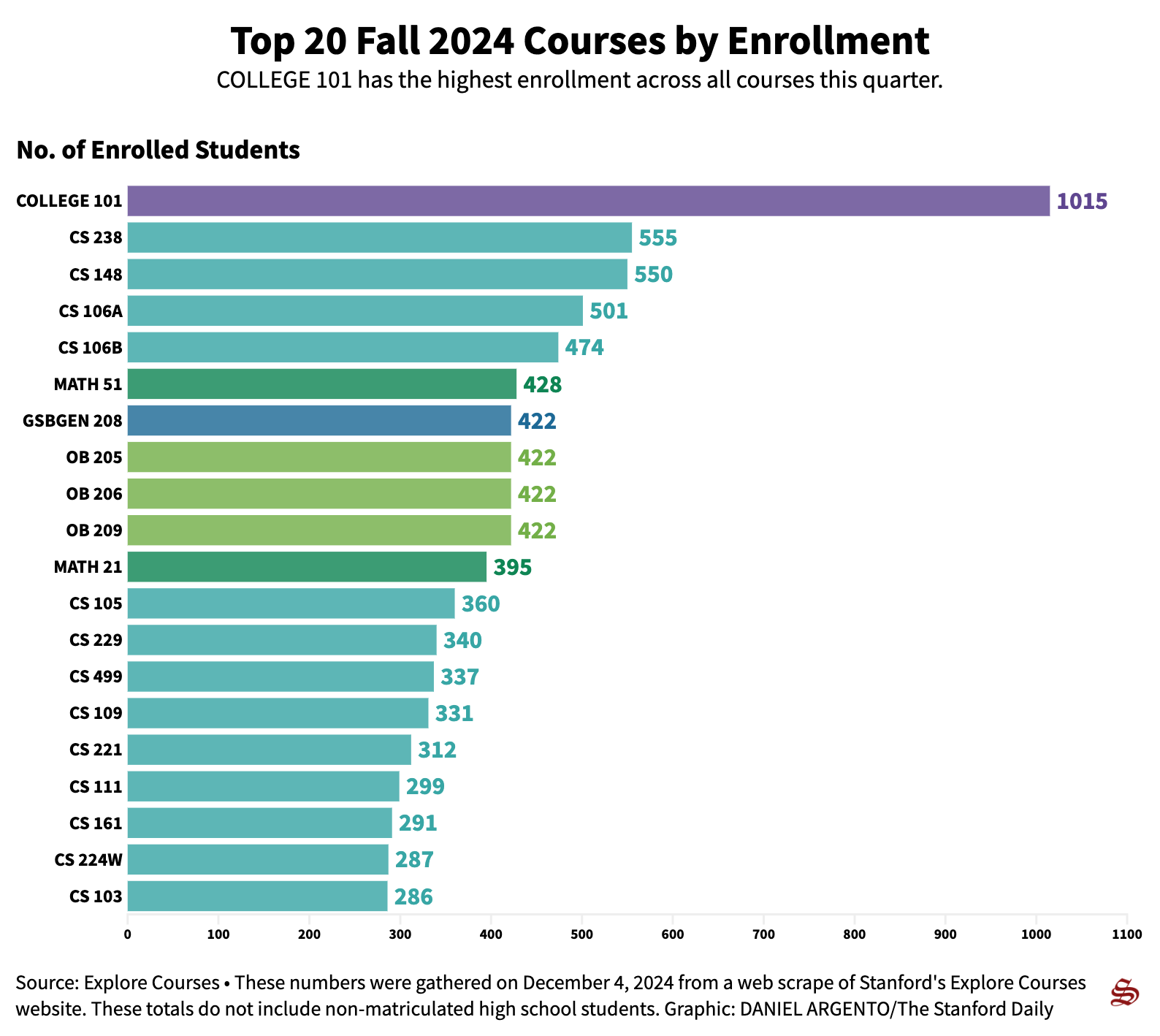Computer Science (CS) and math classes dominated the most enrolled undergraduate courses this quarter, a steady rise from last academic school year.
Seven of the top 10 undergraduate courses were listed as CS courses, up from four last fall. Over half of the top 20 most enrolled undergraduate courses this quarter were in the CS department, as popular introductory courses like PSYCH 1 dropped from the list.
This year, students enrolled in courses in early September, a little under three weeks before the quarter started.
In the graphics below, hover over each bar to view the full course title.
COLLEGE 101: “Why College? Your Education and the Good Life” has the highest enrollment, as was the case last year. This course — which is required for freshmen not enrolled in Structured Liberal Expression (SLE), Education as Self-Fashioning Seminars (ESF) and ITALIC: Immersion in the Arts — explores themes of a liberal arts education in broad contexts, such as its relations to future careers. Many students enrolled in this course take its sequel, COLLEGE 102: “Citizenship in the 21st Century,” in the winter as a means to complete the university’s first-year COLLEGE requirement.
STEM courses were among popular demand. Seven of the top 10 undergraduate courses by enrollment are in CS, continuing a trend of the department’s popularity. The most popular CS course is CS 148: “Introduction to Computer Graphics and Imaging,” taught by Professor Ron Fedkiw. The class covers optics, shading, rendering, geometric modeling and texture mapping. Students create an image using ray tracing for their final project.
The third- and fourth-most enrolled undergraduate courses are CS 106A: “Programming Methodology” and CS 106B: “Programming Abstractions,” — the first courses in Stanford’s introductory CS sequence. CS 106A is taught in Python and expects no prior programming experience. Historically, approximately half the students enrolled are freshmen, according to Carta. Upon successful completion of CS 106A (or the equivalent), students may take CS 106B, a more technically advanced course taught in C++. This course introduces data structures and algorithms.
Among Stanford’s graduate-level courses, CS 238: “Decision Making Under Uncertainty” (cross-listed as AA 238) has the highest enrollment with 555 students. This course equips advanced students with an understanding of autonomous systems. Stochastic dynamics, Bayesian networks and reinforcement learning are topics discussed.
The second-most enrolled graduate course is GSBGEN 208: “Leading with Values.” This first-year MBA course is taught by Neil Malhotra M.A. ’05 Ph.D. ’08, the Edith M. Cornell professor of political economy and author of the book “Leading with Values.” Students delve into ethics and become attuned to “grapple with questions about the role of business in society.”
The graphics below provide a breakdown of course enrollment within three graduate schools: the Graduate School of Business, the Law School and the School of Medicine.
Correction: A previous version of this article used enrollment numbers that did not account for cross-listed courses and the variety of section components offered. The Daily regrets this error.
